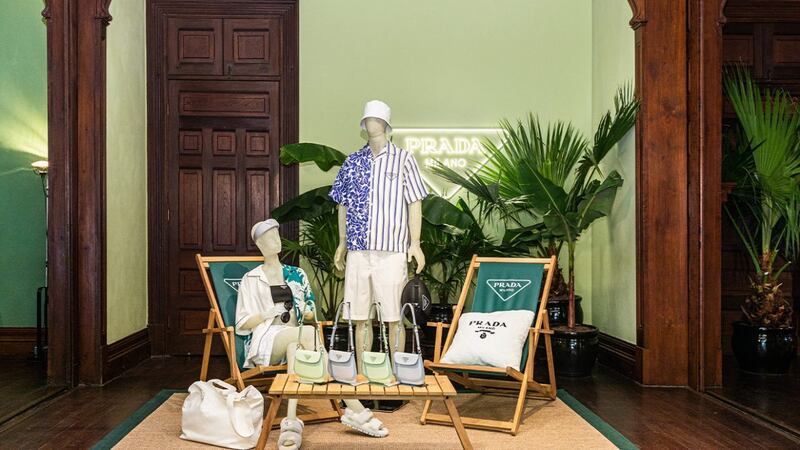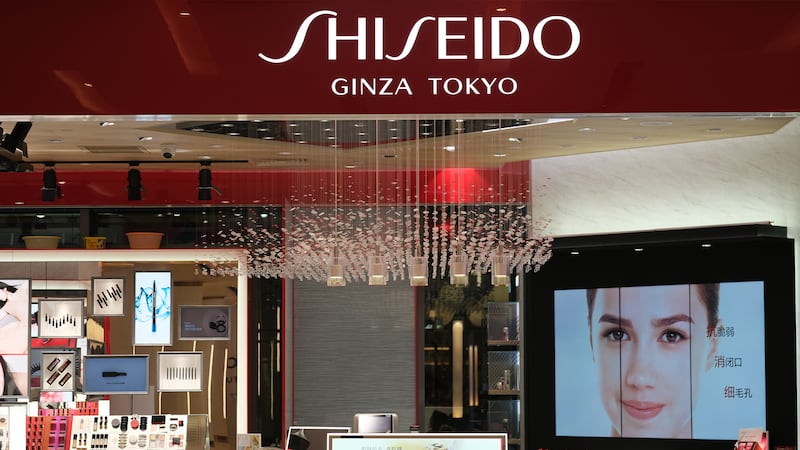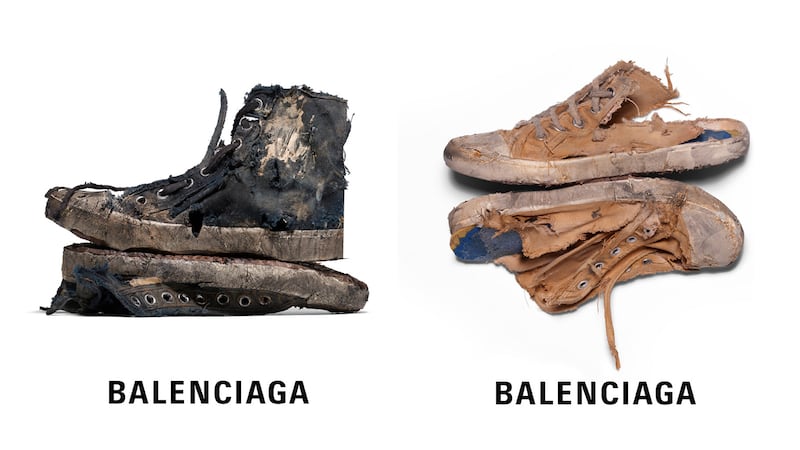
The Business of Fashion
Agenda-setting intelligence, analysis and advice for the global fashion community.

Agenda-setting intelligence, analysis and advice for the global fashion community.

Having endured lockdowns that brought megacities like Shanghai, Nanjing and Shenzhen to a standstill, people across China are now desperate for a change of scenery. Though international travel remains a distant dream for most, domestic tourism looks set to resume for those eager to make an escape.
On Monday, the deputy mayor of Shanghai declared that the country’s commercial capital will finally return to normal life next month, providing residents with some much-needed light at the end of a two month-long lockdown tunnel. While sceptics in the city say they will only believe it when they see it, travel operators are expecting a gradual release of pent-up demand for domestic travel once restrictions are relaxed on June 1.
China’s strict “zero-Covid” lockdowns have dealt a blow to global fashion brands, supply chains and many sectors of the Chinese economy including tourism. In an online seminar before the mayor’s announcement, Nan Yan, insights expert for travel data and analytics firm Forward Keys, said that travel bookings were down 94 percent year on year for the recent May Labour Day holiday and down 71 percent for the upcoming summer holidays.
Chinese consumers do, however, still want to travel domestically, according to a recently released travel sentiment survey by marketing agency Dragon Trail International. Some would-be travellers are ready to book as soon as movement restrictions are lifted; others will need more reassurance to restore confidence.
ADVERTISEMENT
With international travel restrictions predicted to continue well beyond the relaxation of domestic ones, most Chinese will be unable to shop in cities like Paris, London and Tokyo this year. Local shopping destinations like Shanghai and Hainan are likely to be the main beneficiaries as the former plans to gradually increase domestic flights and rail services in and out of the city and the latter continues to promote itself as a duty-free mecca in the tropics.
But beyond these more obvious shopping hubs, leading fashion and beauty executives will be wondering where else Chinese consumers can be reached as they travel around the country — and how to capitalise on the post-lockdown feel-good factor at a time when many brands need to offset a downward trend in the market due to recent restrictions.
Since travel to Hong Kong has been hampered by Covid restrictions amid a broader decline in popularity among mainlanders, Macau is seeing a rebound in bookings, says Dragon Trail’s Parulis-Cook. But many travellers will be looking for something completely different.

After being cooped up at home for so long, travellers from big cities like Shanghai are expected to choose relaxing, non-urban destinations to bask in nature. Though some places will be easier for fashion and beauty brands to leverage than others, a boom in post-lockdown domestic travel presents valuable opportunities to players with a creative approach to retail, pop-up events and marketing campaigns.
“I still think we’re right at the foundation, because the domestic travel industry was completely overlooked for luxury travel until Covid,” said Shane Benis, owner of Nomads Wild, a luxury trekking company that takes people on excursions to places like the oasis city of Dunhuang along the Silk Road in China’s Gobi Desert.
The pull of nature and duty-free resorts
Two upward trends in China are the interest in outdoors activities such as glamping and a shift from group package holidays to independent excursions. Dragon Trail International’s Cook says that more than 75 percent of travellers are interested in nature-based trips and 66 percent in beach and island destinations.
Prada’s transformation of one of its Shanghai stores into a luxe glamping experience demonstrates how fashion can tap into the trend. Chinese lifestyle app Xiaohongshu reports a more than 200 percent year-on year growth in interest in it among users of the app. The company reported that users are combining fashion and glamping with on-location photo shoots showing off their outfits. “They’re wearing ball gowns and Fendi [while glamping],” Parulis-Cook said. “It’s really fun.”
ADVERTISEMENT
Parulis-Cook suggests brands capture consumers’ interest pre-travel rather than on-location. Clearly, the opportunity for players active in the beachwear, swimwear and resort wear segments are at an advantage but most fashion brands can find ways to engage in the outdoors travel experience. Some of the tactics used by players such as Gucci, Jil Sander and Dior when marketing their collaborations with outdoor brands like North Face, Arc ‘Teryx and Descente respectively in China may be worth considering.
Seaside locations remain popular with Chinese travellers and Hainan’s appeal in particular remains strong. Tropical beaches, high-end resorts, and duty-free shopping zones seem to be the perfect mix for more conventional domestic travellers. In April, China’s Office of the State Council announced there will be more Hainan-style tax free zones “with Chinese characteristics” under development elsewhere, although they didn’t note where exactly those might be.
According to Hannah Gao, chief representative of Tax Free World Association in China, there is a mega 90,000 square meter duty-free shopping centre in the works in Guangzhou, just next to the Guangzhou North railway station and close to the airport. She said she expects other regional duty-free shopping centres could follow. “We’re expecting the kind of stores you see in Korea and Japan which can be opened to Chinese visitors before their flight,” she said.
Other duty-free zones are already in operation in popular tourism areas such as Ruili, Yunnan along the border with Myanmar, but they are not yet well-known among domestic travellers, said Gao. Though many Chinese families will return to tourism hotspots like Shanghai Disneyland, others will book western China locations to experience nature like those in Yunnan province.
Though “the investment from [tourism] operators will be bigger and bigger,” Gao doesn’t expect newer duty-free shopping zones to reach the level of Hainan in the next few years as the island took a decade to develop under a highly focused central government policy and pandemic-era international travel restrictions that accelerated its growth.
Beyond the scenic vistas of familiar islands like Hainan and Xiamen, where should fashion and beauty brands look for ways to engage with customers that are befitting of an escape to nature?
Aranya, Beidaihe, Qinhuangdao
Though many resort-type destinations don’t yet have full retail infrastructure, there are other ways brands can take advantage of the return of domestic travel. Pierre Cardin’s pre-pandemic fashion show in 2019 in Aranya is one such example.
ADVERTISEMENT
For creative industry leaders in Beijing, the coastal community of Aranya in Qinhuangdao’s Beidaihe district is the weekend destination of choice. Feng Chuxuan, a media entrepreneur in Beijing, says he spends most weekends there with his family.

It is clearly a very different proposition to the much bigger city of Xiamen in Fujian province at the other end of the country which has attracted creative types and KOLs (key opinion leaders, as influencers are known locally) from across China but the relaxed vibe in the Aranya area of Hebei province is starting to shape a community of its own. “More than 90 percent of my social circle spends time there,” said Feng.
So strong is the pull that Feng, founder of Huasheng Media which publishes the Chinese editions of T: The New York Times Style Magazine and Wallpaper, decided to buy a house there. Less than two hours by train or around three hours by car, the area boasts beaches, horse farms and golf courses. But what attracts many are the museums, art centres and unique architecture showcased there.
Feng said that the region has been popular among creatives since 2017. “There are many really great public architectural spaces, theatres and galleries… Many people who come here say to me, ‘wow this doesn’t look like China.”
Wang Tianye, who is responsible for arts and culture festival projects in Aranya, said that the place has the feel of a coastal British town or a village in the Swiss Alps.
Boutique fashion brands and multi-brand boutiques such as Cave by Dongliang, Hug, SND and OK Center cater to the mostly middle and upper middle-class clientele, he added, but thinks there is a lot of room to grow.
“I think shopping is becoming more and more important in Aranya, for fashion and for furniture. All the best restaurants, and coffee shop brands in Beijing and Shanghai have a branch in Aranya,” said Feng. Besides Pierre Cardin, companies such as Apple and BMW have also held marketing activations or events there. “I think there will be even more brand events there in the future. If a brand is related to design or travel or sustainability, then I think it’s a great opportunity.”
Zhoushan Archipelago, Zhejiang
Breathtakingly beautiful scenery, delicious seafood and water sports make Zhoushan Island Archipelago an attractive destination for Shanghai and Zhejiang-based creative professionals. As early adopters, their travel and shopping choices often influence a broader demographic of consumers in the next phase of a holiday destination’s development.
While Zhoushan’s main tourist destination remains Putuoshan, an island attracting Buddhist pilgrims, the other islands bring in tourists interested in the outdoors and seaside activities. The area attracts cyclists, thanks in part to an annual race held there. Zhoushan also hosts other attractions, such as an international sand sculpture festival and the Donghai Music Festival.
With a surf club right on Zhoushan beach and a string of 400 islands waiting to be explored, the area is ripe for development. Zhou Yan, a cultural event planner said that the local government has earmarked tourism development as a top priority for thirty of the surrounding islands. The archipelago’s beaches are not tropical and the waves aren’t as high as in Hainan, but it still attracts surfers looking for a nearby retreat three hours from Shanghai.
Parulis-Cook said, “Surfing and water sports is another kind of big trend that we’ve seen in Chinese domestic tourism over the past couple of years, and that includes things like yachting.”

Several five-star luxury hotels like the Shangri-la, Westin and Hilton have already opened in Zhoushan, but it is still in the early phase of growth as a tourist destination. Last year a 25 kilometre bridge was completed connecting Zhoushan Island with other islands in the archipelago.
“For luxury brand retail, I think it’s not quite mature [enough] here yet,” Zhou said, “but it is the perfect location for brand offline events and VIP tourism [right now].”
Beihai, Guangxi
Among the pundits already trying to predict where ‘the next Hainan Island’ might be after the popular duty-free destination becomes saturated, some speculate that Beihai Guangxi Province could be a contender. The beaches at nearby Weizhou Island are known as some of the most beautiful in China.
Adina-Laura Achim, CEO of Achim Marketing Solutions Corp, said that while Weizhou has potential, “the volcanic island needs an infrastructure upgrade and a service-oriented industrial system.” Meanwhile the gateway city of Beihai on the mainland, only 36 nautical miles away from the island, is in a much better position with luxury hotels Shangri-La, Crowne Plaza and Sheraton already located there.
Achim believes Beihai would be ideal for fashion brands to establish retail. “Brands can take advantage of the upscale infrastructure and open boutiques in luxury hotels or sell in shopping centres,” she said. “At the same time, jewellery brands could profit from the association with Beihai, as many tourists return to this booming city to buy pearl jewellery.”
Achim says that the local population has strong purchasing power too and suggests that vintage and pre-owned luxury stores would do well in the area alongside full-price offerings. JD.com has opened a live-streaming base and cloud computing base in Beihai and there is a young professional population already living there to support the local economy.
But she adds that “the government needs to improve the quality of projects” there before the city can reach its full potential.
Ultimately, it will be up to fashion and beauty executives to think creatively to leverage the opportunities presented by China’s evolving domestic tourism landscape in a cost-effective way that also works for the post-lockdown era. But Shane Benis says it’s also important to think long-term.
“Even though Covid has presented a massive [short-term] hurdle in terms of visibility [of] travel schedules and access to different regions, the development for this luxury sector is booming [and] people are still pumping money into facilities because local market is big,” he said.
时尚与美容
FASHION & BEAUTY

Global Fashion and Beauty Firms’ Sales Suffer Amid Chinese Lockdowns
Global firms are still feeling the heat from Beijing’s Covid Zero policy, with weeks-long lockdowns further derailing supply chains and freezing industrial hubs across the mainland. Over 180 firms mentioned “China” and “lockdowns” in their Q1 earnings and statements, according to Bloomberg — a surge from 50 companies in Q4 of 2021. In fashion and beauty, the list includes Shiseido, Korea’s personal care giant LG, Under Armour and PVH. On May 12, Tapestry Inc. lowered its annual profit forecast, joining the likes of Kering and EssilorLuxottica in reporting a sales hit due to lockdowns. Meanwhile, Italian shoemaker Tods remains optimistic, seeing full-year sales and profitability expectations as achievable despite a potential 40 percent sales decline in Q2. (Reuters)
Shein’s Growth Slows, Revenue Meets Expectations
The Chinese ultra-fast fashion giant is seeing its growth rate fall from the heights of the pandemic, during which it became a global phenomenon thanks to the e-commerce boom and high demand for cheap, trendy fashion in the West. According to people familiar with the business, Shein’s annual sales growth slowed to around 60 percent in 2021 — a dramatic drop from 2020′s 250 percent. At $16 billion (up from $10 billion in 2020), annual revenue met the company’s expectations, but expansion began lagging in H2 2021 and hasn’t stopped since, due to several factors including a weakening yuan, US-Sino tensions and China’s Covid lockdowns. Shein’s growth still outpaces rivals like H&M and Zara, but the timing isn’t ideal: reports of the slowdown comes just weeks after Bloomberg wrote the company was seeking to raise $1 billion in funding at a $100 billion valuation. (Bloomberg)
Shiseido Registers Innovation Fund to Invest in Emerging Companies
The Japanese beauty giant on May 10 officially registered Xiamen Ziyue Equity Investment Partnership, a beauty investment fund for the Chinese market. The firm announced its plans last August with a goal to “explore investment opportunities among China’s emerging brands in cosmetics and wellness, as well as in related technology companies such as e-commerce services and consumer experience technology.” The fund will be operated by Shiseido’s China subsidiary and partner Boyu Capital, and currently has a registered capital of 501 million yuan. The move points to the extent that global beauty giants are increasingly dependent on the Chinese market and ways in which they’re working to ramp up growth in the mainland. During the group’s 2021 fiscal year, Shiseido’s China sales reached 274.7 billion yen (around $2.2 billion), second only (and catching up) to its domestic market. (INF)
科技与供应链
TECH & SUPPLY CHAIN

Xiaohongshu Cracks Down on Accounts to Ensure Content Stays ‘Authentic’
The Chinese social media app on May 9 doubled down on its pledge to stop its users from flaunting their wealth, which it says will help to preserve positive interactions on its platform. Xiaohongshu said that “entrepreneurial” users will be punished for promoting excessive spending, though exactly how that will be interpreted remains unclear. The announcement came just days after Xiaohongshu released a code of conduct intended to preserve it as an authentic space for businesses, which highlighted that brands should refrain from exaggerating content, be transparent and avoid overly interfering with creators when sponsoring posts. The move follows Xi Jinping’s calls for ‘common prosperity’ but considering the content brands typically post on the app, false marketing could be a greater concern for some than the promotion of excessive spending. (Jing Daily)
Political Advisor Wang Yang Stresses Support for Digital Economy
China’s top political advisory body — the Chinese People’s Political Consultative Conference (CPPCC) National Committee — hosted a session on May 17. Yang, its chairman, was among the advisors and experts who called for the greater integration of China’s digital economy with its “real economy.” Advisors stressed the need to clarify regulatory measures on matters such as data security, and said that China should take an active role in global digital governance. Vice Premier Liu He voiced his support for the platform economy and direct investment in the digital ecosystem, adding that the country should formulate measures to ensure development remains orderly. The comments reflect concerns around the country’s e-commerce sales, which grew just 6.6 percent in Q1 according to the National Bureau of Statistics — the slowest rate since June 2020. (Xinhua)
Shenzhen Doles Out $1.6 Million to ‘Made in China, Sold on Amazon’ Firms
The city’s government is giving away 11 million yuan in grants to local third-party cross-border e-commerce service providers in an effort to boost sales of Chinese exports, which is more reliant than ever on online sales amid Covid-19 lockdowns. A total of 11 recipients, including the likes of payments solution provider Shenzhen Ocean Payment and website building service Shop Lazza have received 1 million yuan each. Shenzhen is a cross-border e-commerce hub and houses over 30,000 firms — around 35 percent of the nation’s e-commerce industry, according to local authorities. The grants fall under a 2021 initiative to boost cross-border e-commerce sales for merchants, service providers and warehouse operators, which the government committed to after some Chinese Amazon merchants were banned for irregularities in ratings and reviews. Last September, Amazon said it closed 3,000 merchant accounts powered by 600 Chinese brands, in a crackdown on review abuses. (SCMP)
消费与零售
CONSUMER & RETAIL

Chinese Netizens Bash Balenciaga’s Destroyed Sneakers
The French luxury brand last week released a provocative campaign for its 12,000 yuan (around $1,800) extra-distressed versions of its ‘Paris Sneaker’, in what it said was an effort to promote conscious consumption — 100 pairs of the limited edition shoes would be sold alongside a separate, wider release of regular Paris trainers ($495) to show that the latter were meant to be worn for a lifetime. Ostensibly intended to spark conversation, the images did just that around the world. In China, after going viral on Weibo, they were slammed for being too ugly to raise awareness for a worthy cause. Some commentators called the campaign “a game for the rich” and said it would be more earth-friendly to not sell them in the first place. (SCMP)
JD Reports Slowest Quarterly Growth Since 2014
The e-commerce giant’s Q1 results were mixed, beating market expectations on revenue but lagging on revenue growth as net losses widened. It posted on May 17 that revenue rose 18 percent year-on-year to 239.7 billion yuan ($35.5 billion), marking the firm’s slowest growth since it went public in 2014. Amid lockdowns, dampened consumer demand and macroeconomic headwinds, it’s not only JD.com but major e-tailers generally that are facing challenges: both JD.com rival Alibaba and group-buying platform Pinduoduo have yet to release Q1 results but saw their slowest revenue growth in Q4 2021. Recent outbreaks of the Omicron variant are hitting supply chains harder than they did in 2021, said JD.com chief executive officer Xu Lei, due to higher contagion rates; he called current outbreaks a “double killer” affecting both online and offline businesses — interesting timing, considering JD.com then launched four ‘J Shop’ physical fashion and lifestyle stores in four Chinese cities on May 20. (Technode)
China’s April Retail Sales Fall Faster Than Expected
The country’s retail and factory activity dropped drastically last month with shoppers and employees homebound, dampening the outlook for China’s economy. Retail sales declined 11.1 percent year-on-year, marking the biggest contraction since March 2020, data from the National Bureau of Statistics reveals, and a steeper decrease than forecasted in a Reuters poll. Meanwhile, factory production fell 2.9 percent from 2021, the most drastic decline since February 2020. Analysts say the country’s slowdown might be harder to recover from than the one first experienced after Covid-19′s initial outbreak due to limited stimulus options available to policymakers. However, some are optimistic that the worst could be over. A spokesperson for the National Bureau of Statistics expects the economy to improve in May once cities like Shanghai ease lockdown measures, but recovery will be far from easy, or cheap: Bloomberg forecasts that Beijing’s efforts to kickstart growth amid the current downturn could cost it $5.3 trillion this year. (Reuters)
政治,经济与社会
POLITICS, ECONOMY, SOCIETY

Shanghai Plans Return to Normal Life on June 1
After announcing 15 out of 16 of the city’s districts have eliminated cases of Covid-19, the deputy mayor of Shanghai declared on Monday that the country’s commercial capital will relax lockdown restrictions on June 1. The announcement meets the conditions for resuming normal life under China’s strict ‘zero-Covid’ policy. The planned reopening of domestic flights and stores will help to also see the return of consumer spending. China’s economy and supply chains have been disrupted due to Covid curbs in multiple Chinese cities. (Reuters)
Beijing Calls WHO Criticism of Its Zero-Covid Policy ‘Irresponsible’
Chinese authorities on May 11 said it was irresponsible for the World Health Organisation (WHO) to criticise its strict policies aimed at curbing Covid-19 infections after the WHO director-general Tedros Adhanom Ghebreyesus said the country should reconsider its stance in the face of an “evolving” and “more transmissible” virus. “We don’t think [Beijing’s strategy] is sustainable,” said Ghebreyesus — a rare criticism of a WHO member state’s domestic Covid-19 blueprints and a far cry from the WHO’s heedful treatment of Chinese policies in 2020. Chinese censors on platforms like Weibo and WeChat worked to mute online discussions around Ghebreyesus’ statement, which came as official stats showed lockdowns in cities like Shanghai were affecting manufacturers and already challenged supply chains. “We hope the relevant individual will…refrain from making irresponsible remarks,” said Chinese foreign ministry spokesperson Zhao Lijian. (Financial Times)
US Push Taiwan to Follow Ukraine’s Strategy in Countering China
American officials are urging their counterparts in Taiwan to look to Ukraine in their plans to deal with a possible attack by Beijing, just as the latter is undoubtedly learning from Russia’s invasion of its western neighbour, former and current officials told Politico. “There is no question that the perceived reality of the possibility [of a Chinese invasion of Taiwan] is greater than it was three months ago,” said Aaron Friedberg, professor of politics and international affairs at Princeton University. Since May 3, a Chinese aircraft carrier has conducted take-off and landing training near Japan’s Okinawa prefecture, in waters just east of Taiwan — a move Japanese authorities say is a test to see how the US and Japan will respond to its activities. (Politico, Taiwan News)
China Decoded wants to hear from you. Send tips, suggestions, complaints and compliments to robb.young@businessoffashion.com.
With consumers tightening their belts in China, the battle between global fast fashion brands and local high street giants has intensified.
Investors are bracing for a steep slowdown in luxury sales when luxury companies report their first quarter results, reflecting lacklustre Chinese demand.
The French beauty giant’s two latest deals are part of a wider M&A push by global players to capture a larger slice of the China market, targeting buzzy high-end brands that offer products with distinctive Chinese elements.
Post-Covid spend by US tourists in Europe has surged past 2019 levels. Chinese travellers, by contrast, have largely favoured domestic and regional destinations like Hong Kong, Singapore and Japan.